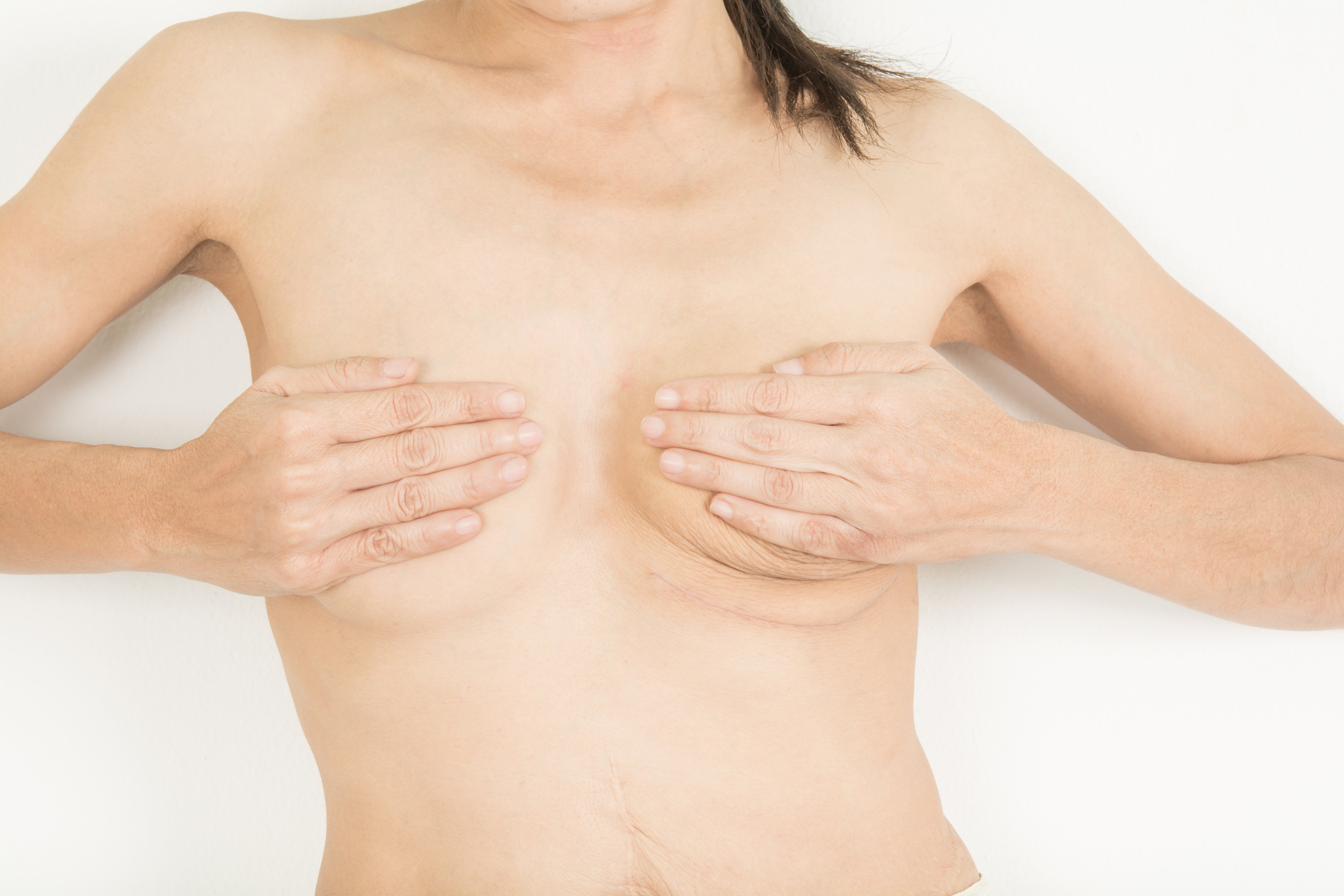- Acne
- Actinic Keratosis
- Aesthetics
- Alopecia
- Atopic Dermatitis
- Buy-and-Bill
- COVID-19
- Case-Based Roundtable
- Chronic Hand Eczema
- Chronic Spontaneous Urticaria
- Drug Watch
- Eczema
- General Dermatology
- Hidradenitis Suppurativa
- Melasma
- NP and PA
- Pediatric Dermatology
- Pigmentary Disorders
- Practice Management
- Precision Medicine and Biologics
- Prurigo Nodularis
- Psoriasis
- Psoriatic Arthritis
- Rare Disease
- Rosacea
- Skin Cancer
- Vitiligo
- Wound Care
Article
Quality of life suffers in breast cancer patients with radiodermatitis
Author(s):
Radiodermatitis affects approximately 95% of all patients who receive radiation therapy for cancer - many of who are women undergoing breast cancer treatment. A recent study has found that developing the condition has a significant and detrimental impact on breast cancer patients' overall quality-of-life.
“Knowing how radiodermatitis impacts our patients is integral to effective treatment,” Yara Christina de Paiva Maia says. “We know dermatologists want to do whatever they can to improve symptoms and quality-of-life for women treated for breast cancer who develop this condition.” (srisakorn - stock.adobe.com)

Radiodermatitis affects approximately 95% of all patients who receive radiation therapy for cancer. Many of these individuals are women undergoing breast cancer treatment, and they report developing the condition has significant detrimental impacts on their overall quality-of-life.
In a study published recently in the Journal of Pain and Symptom Management, Yara Christina de Paiva Maia, a professor with the Universidade Federal de Uberlandia, and her colleagues investigated how radiodermatitis affected these patients, finding a significant need for methods to reduce the impact on quality-of-life exists.1
RELATED: Radiodermatitis increasingly common in female breast cancer patients
“The impact of radiation therapy on functionality and the daily lives of the patients is sometimes underestimated when compared with the chemotherapy period,” de Paiva Maia writes. “However, our study and the literature show that this period presents unique changes, including modifications in their daily routine due to the treatment plan, an increase in physical discomfort, and changes in the breast appearance.”
According to Laura Beamer, Ph.D., associate professor of nursing at Northern Illinois University, affected women reveal the itching, burning, stinging, pain, irritation, embarrassment, depression, reduced social interaction and diminished ability to show affection all chip away at their happiness with their daily lives. The effects can be significant enough to prompt some women to halt treatment, making it critical for dermatologists to find ways to reduce the impact as much as possible.
Tracey Gosselin, chief nursing officer at Duke University Hospital, agrees.
“Knowing how radiodermatitis impacts our patients is integral to effective treatment,” she says. “We know dermatologists want to do whatever they can to improve symptoms and quality-of-life for women treated for breast cancer who develop this condition.”
Active treatment is one way dermatologists can augment quality- of-life. Topical products that contain emu oil can rehydrate the dry skin, relieving the itching associated with radiodermatitis. Additionally, these products have been shown to reduce inflammation and promote faster healing. Recent research also indicates low level light therapy - red or infrared light with power less than 150 megawatts - can reduce inflammation, pain, swelling, and help save adjacent tissues and nerves. Short pulse dye lasers can also help alleviate symptoms in radiodermatitis that emerges long after treatment ends.
RELATED: Fat grafting for breast cancer deformities
But, dermatologists can do more than offer medical interventions to alleviate symptoms. They can also recommend various steps patients can implement to reduce the daily impact of radiodermatitis.
For example, Gosselin says, teaching patients how to care for their skin at home can have a great benefit. First, she recommends teaching patients proper hygiene. Instruct them to gently wash the skin, but never to scrub it. Encourage patients to wear cotton clothing as much as possible and to never wear tight fitting underwire bras because they can rub and chafe, exacerbating existing symptoms. This can be a particular problem for women with large, pendulous breasts, she says.
Additionally, caution patients against getting in hot tubs or using heating pads on the impacted skin. They should limit sun exposure as much as possible, either staying out of the sun or wearing clothing that provides proper coverage. And, they should only use alcohol-free products on the skin to limit any burning or stinging.
Overall, Gosselin says, dermatologists must be sure to keep the lines of communication open with their patients to discuss any changes in their radiodermatitis. Open conversation can help patients learn how to augment their own comfort on a daily basis even when they can’t see their provider.
“We must encourage good self-care. To me, that’s the key piece,” she says. “Dermatologists must have a really good understanding of dealing with this condition from the patient’s perspective.
They might need our help finding different treatments or different activities that can best support them during this time.”Â
References:
1. Fuzissaki MA, Paiva CE, Oliveira MA, Lajolo canto PP, Paiva maia YC. The Impact of Radiodermatitis on
Breast Cancer Patients’ Quality of Life During Radiotherapy: A Prospective Cohort Study. J Pain Symptom
Manage. 2019;58(1):92-99.e1.
2. Beamer LC, Grant M. Using the Dermatology Life Quality Index to Assess How Breast Radiodermatitis
Affects Patients’ Quality of Life. Breast Cancer (Auckl). 2019;13:1178223419835547.
Newsletter
Like what you’re reading? Subscribe to Dermatology Times for weekly updates on therapies, innovations, and real-world practice tips.















